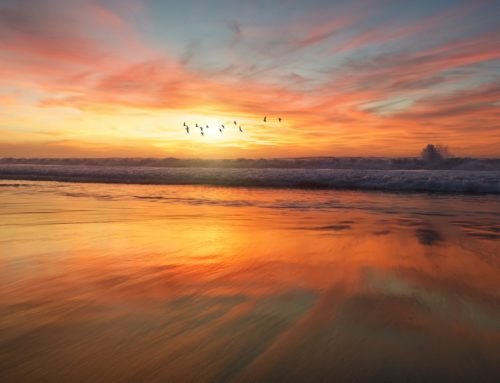Prior to El Segundo’s incorporation in 1917, this area was part of the original Spanish land grant for “Rancho Sausal Redondo” (“Ranch of the Round Clump of Willows“) in 1822, a rancho with a land mass of nearly 25,000 acres which extended from the areas as far north of what is now Playa del Rey, as far east as Inglewood, and as far south as Hermosa Beach. The land consisted of wheat and barley fields on which cattle and sheep grazed.
In May 1911, five men representing the Standard Oil Company arrived here: Richard J. Hanna and J.E. Howell of the Eclipse refinery of Franklin, Pennsylvania and John Black, Henry Foster and William Rheem from the Standard Oil refinery in Point Richmond a city 18 miles east of San Francisco). They were surveying the area as a potential site for their next oil refinery. What was required was an area adjacent to the seashore so their tankers could have appropriate access. The undeveloped nature of the site appealed to them because land costs had to be kept to a minimum. Also, the site had to be close to populated areas so it could attract enough employees. The “clump of willows” was just what Mr. Hanna’s team was looking for..
Lastly, this new site needed a name. Richard Hanna’s wife, Virginia, deemed this expanse as “El Segundo“, (Spanish for “the second one,”) because the site was to be Standard Oil’s second oil refinery in California (The Point Richmond refinery was already christened as “El Primero“). Sometime later, a group of proud but unknown citizens had nicknamed it “El Segundo a nada” (Spanish for ‘second to none’).
Standard Oil bought 840 acres of this land on June 11. The refinery opened for business, just five and a half months later, on November 27, 1911, and just celebrated its 100th anniversary of operations. .

1925 aerial shots taken looking northwest toward the Refinery. The area in the foreground is now the Manhattan Village Mall.
The city remained a one-industry town until the 1920s, when Mine’s Field, a landing strip used by early barnstormers, was chosen as the site for the new Los Angeles Municipal Airport. Then, in the mid-1950s, Southern California Edison purchased a 43-acre site for a major electrical generating station.
Naturally, the addition of the Los Angeles International Airport, which officially opened in 1930, had a major role in turning El Segundo into a aerospace center. The likes of Douglas Aircraft, Hughes Aircraft, Northrop and North American Aviation (Rockwell) all located in El Segundo during the 1940s and 1950s. Most of these aircraft-related companies would eventually transition into the aerospace/defense industry. In 1960, the creation of The Aerospace Corporation and Los Angeles Air Force Base gave El Segundo the esteemed title of “The Aerospace Capital of the World.”
Today, the city encompasses over five square miles, and the city’s population has leveled off at approximately 16,500 residents, which has enabled the community to preserve the small town intimacy and charm.
Source: http://www.elsegundo.org/working/history/default.asp
For more information about Palos Verdes and South Bay Real Estate and buying and selling a home on the Palos Verdes Peninsula, visit my website at https://www.maureenmegowan.com . I try to make this the best real estate web blog in the South Bay Los Angeles and the Palos Verdes Peninsula. I would love to hear your comments or suggestions.




